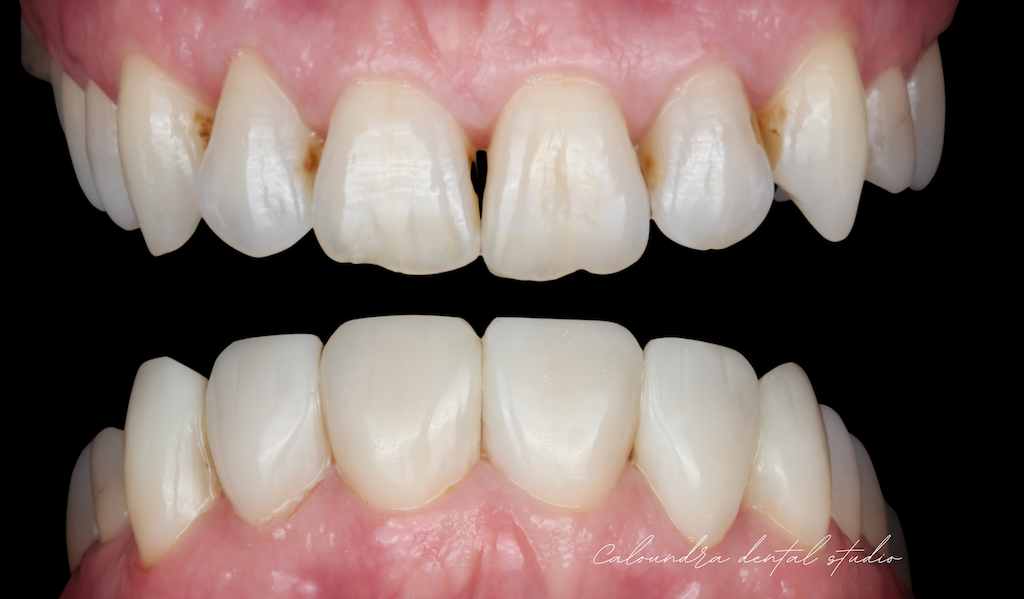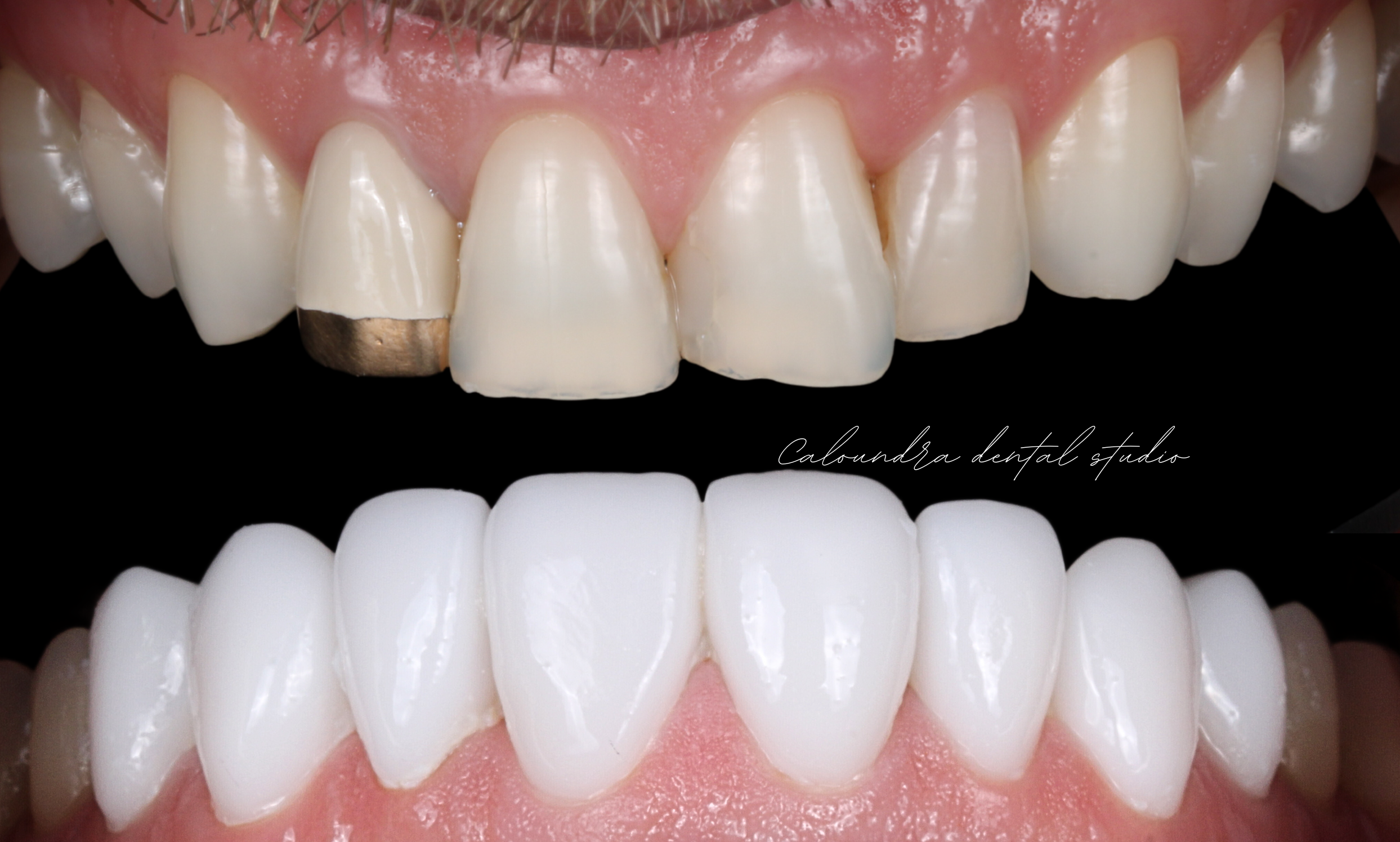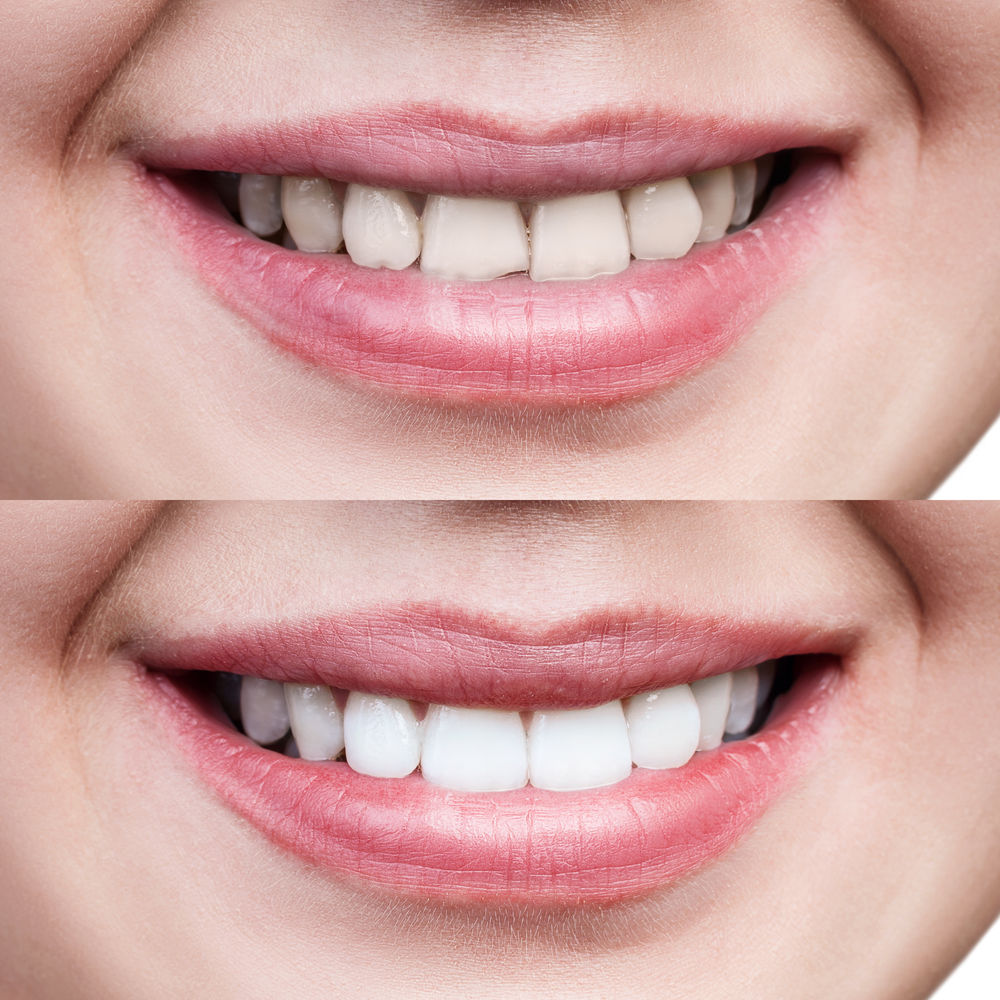What is the difference between porcelain veneers and composite veneers?
Porcelain veneers are thin shells of porcelain adhered to the outer surface of the tooth. Composite veneers are resin bonded to the outer surface. Determining which type of veneer is right for you comes down to multiple different factors. Read below to learn about the differences and then schedule a dental veneer consultation with Dr Gary Nahal to discuss more.
Time |
COMPOSITE VENEERS- This is because they can be done chairside in the same visit. In Most cases NO REMOVAL OR GRINDING OF TEETH IS REQUIRED. Your dentist will match the resin to the shade of your surrounding teeth for the most natural look. The resin is bonded to your teeth, and then polished. You can walk out the same day with a new smile! PORCELAIN VENEERS- Typically take at least two visits. Your dentist will remove a very thin layer of your teeth (0.5 to 1mm approx.) Here in our practice we are able to SAME DAY VENEERS, You can walk out the same day with a new smile!
|
Durability | With proper care, porcelain veneers should last 10-40 years. Composite veneers, on the other hand, typically last 5-15 years. While porcelain is fragile, once bonded to a healthy tooth it is extremely durable. Composite is durable but not as strong as porcelain and is more prone to chipping. However, if damage were to happen to a porcelain veneer, it would have to be replaced, it cannot be repaired. If you chip a composite veneer, you can repair it. |
Looks | The translucent properties of porcelain allow the veneer to catch light extremely similar to the way a natural tooth does. You can choose to go as white shade as possible, which is not possible with composite veneers in some cases While composite resin still looks great, porcelain is unmatched. An incredible benefit of porcelain veneers is they are staining resistant. If you receive this type of veneer on most of your upper and lower teeth, this could mean no more having to whiten your natural teeth. Composite resin will stain like natural teeth. Another thing to note is porcelain veneers are not reversible, composite veneers are if you were to be unhappy at any point |
Cost | Porcelain veneers are more expensive than composite initially. The placement of porcelain takes more time, expertise and resources.
No matter what you choose they both look amazing!
|
Composite veneers example

Porcelain Veneers example

Can't make a decision?
To Book Online, CLICK HERE your free consultation Today!!
Single Visit Digital Dentistry
''Smile Makeover in one day!!''
NO UNPLEASANT, MOUTH FULL OF IMPRESSION MATERIAL TRAY
No more gagging on the mouth full of tray filled with impression material we use a scanner to record your digital impression just like taking photos!
NO FOLLOW UP APPOINTMENTS
As we will start and finish the crown/veneers in one appointment, there is no need to comes back for follow up visit and no more extra numbing injections.
NO BOTHERSOME TEMPORARY CROWNS
We understand that temporary crowns can be annoying so time to say goodbye to temporary crowns.
difference between crown and veneer
Veneers and crowns both improve the appearance and function of your teeth. Because they seem to provide the same benefits, many people assume that veneers and crowns are the same thing.
However, while these two treatments may seem similar, there are some major differences between them.
What Types of Problems do Dental Veneers Fix?
|  |
DIFFERENCE BETWEEN Porcelain Veneer AND A CROWN?
Porcelain veneers
are made from thin layers of fine, stain-resistant dental porcelain and are usually only about 1mm thick. Veneers are a less invasive cosmetic dentistry option, with the procedure leaving most of your existing tooth intact.
To prepare your tooth for a porcelain veneer, your dentist will grind down about half to one mm of the enamel from your tooth . It is important to note that a veneer can only be placed on a tooth that has plenty of existing enamel.
What Are Dental Crowns? | A dental crown completely covers the entire tooth, which means more of the tooth will need to be drilled down before a crown can be placed. Crowns are typically used to restore teeth that have been badly damaged by decay, cracks, or fractures. |
Veneers or Crowns: How Are They Similar? | Both veneers and crowns are dental treatments that improve the appearance and function of teeth. They are typically used to restore teeth that are somehow damaged, whether discoloured, crooked, decayed, chipped, cracked, or broken. Veneers and crowns are both made to match the colour of the rest of your teeth or to any desired colour you would like . You can choose natural to super white shade. Once they are applied, it’s difficult to tell the difference between a veneer and crown because they will each have a similar effect on your smile. You will care for both veneers and crowns in the same way. You’ll need to brush and floss them twice a day just like the rest of your teeth. |
Veneers or Crowns: How Are They Different? | The biggest difference between veneers and crowns is how they fit your tooth and the reason behind needing them. A porcelain/ceramic veneer is bonded to just the front surface of your tooth, while a dental crown covers your entire tooth. |
Is Veneer or Crown Right for Me? | Since veneers and crowns seem to provide basically the same function, they can be used interchangeably, right? No. Your dentist will recommend one dental treatment option over the other based on your specific situation. Dental crowns are typically the best option if your tooth is very damaged, has a large filling, or has undergone a root canal, since the tooth enamel is more compromised and will need better protection. Porcelain veneers, on the other hand, are best for purely cosmetic purposes. If your tooth is mostly intact and only needs minor shape correction or an improved colour appearance, then your dentist will likely recommend porcelain veneers. |